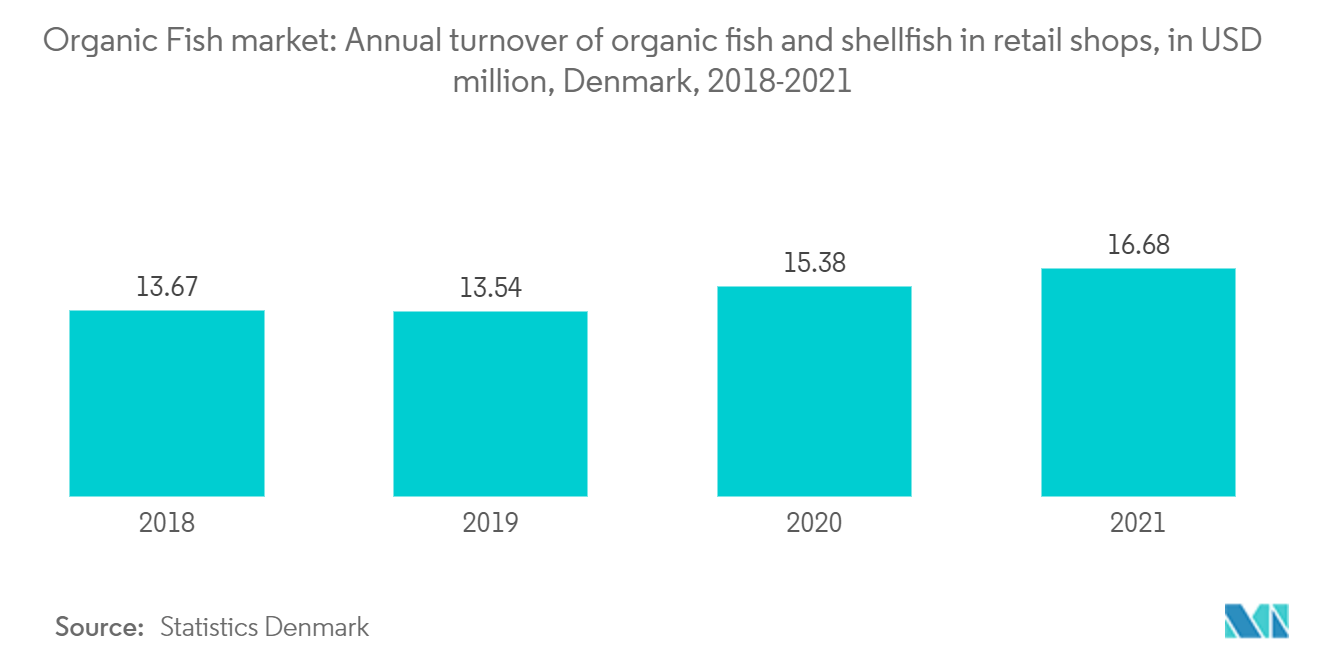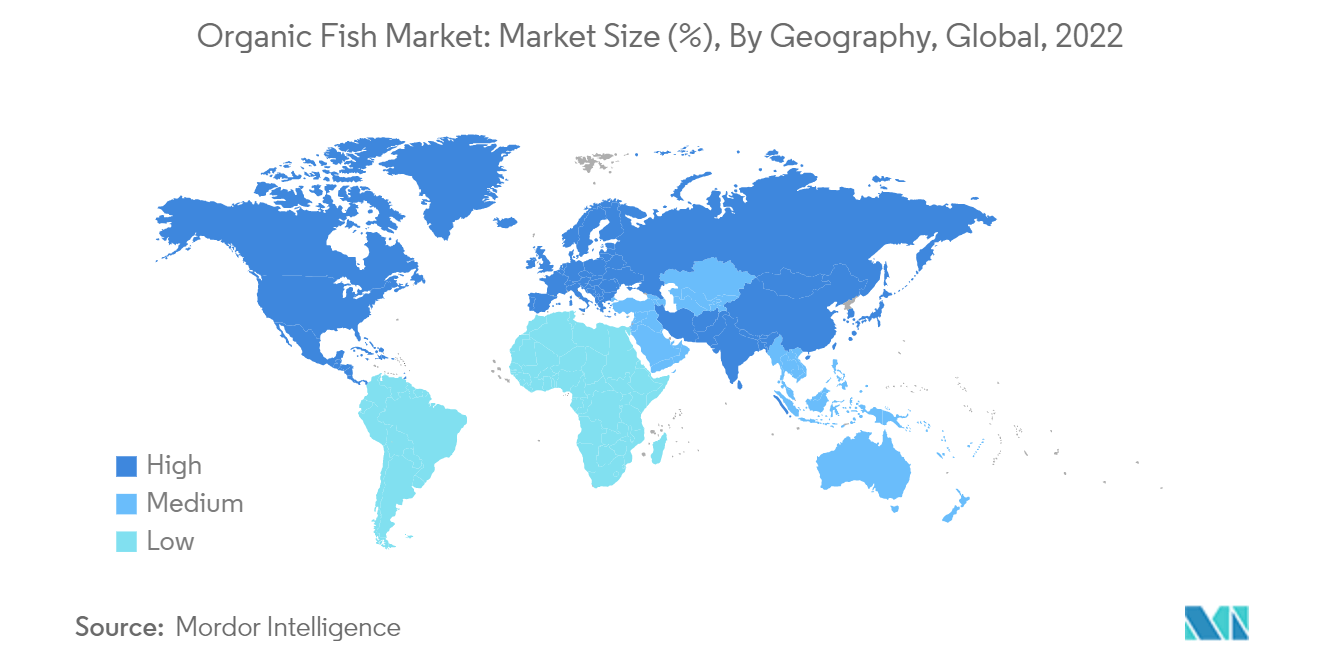Market Trends of Organic Fish Industry
Rising Health Awareness Promoting Demand
- Fish is an excellent source of protein, omega-3, omega-6 fatty acids, and several minerals and vitamins (including vitamin D). The American Heart Association recommends eating fish at least twice weekly as a healthy diet. It helps in healthy brain function and infant development of vision and nerves during pregnancy. Omega-3 fatty acids are abundant in oily fish, such as salmon and mackerel. Fish contains vitamin D. Thus, people living in areas above the arctic circle that do not receive adequate sunlight depend on fish for their daily vitamin D. These factors have driven the demand for fish.
- However, the conventional ways of farming fish are overcrowded and unhygienic ways can cause fish to accumulate toxins such as polychlorinated biphenyls (PCB), polybrominated diphenyl ethers (PBDEs), mercury, cadmium, dioxins, chlorinated pesticides and organophosphates from water. Fishes are susceptible to bioaccumulation, where heavy metal contaminants and toxins tend to concentrate in the upper levels of the food chain.
- Organic fish is packed with protein, vitamins, and nutrients that can lower blood pressure and help reduce the risk of a heart attack or stroke. Also, organically sourced fish are free from harmful chemicals, pesticides, and other toxins. Such factors have helped drive the demand for organic fish over the recent past.
- For instance, according to the Federal Ministry of Food and Agriculture survey, 29% of respondents in Germany most frequently bought organic fish from December 2022 to January 2023. Given the numerous benefits and potential risks, the demand for organically sourced fish is expected to rise.

Asia-Pacific Holds a Prominent Share in the Market
- Asia Pacific has emerged as a significant market for organic fish due to the increasing opportunities created by the developing economies in the region. As per the China Green Food Development Center, in 2021, the total area of organic aquaculture in China was estimated to be around 390.54 thousand hectares. The region also has a strong culture of consuming and preparing authentic fish-based dishes, which can be observed through the diverse offerings on restaurant menus.
- According to the National Bureau of Statistics of China, the average per capita consumption of aquatic products was about 16.7 kilograms in urban China in 2021. Moreover, developing economies such as India and China have become centers of some of the most popular fish-based cuisines globally.
- Furthermore, the increasing awareness about health and wellness has led to a rise in demand for clean-labeled fish products that are free from toxins, harmful chemicals, pesticides, and other contaminants. Fish is known to reduce the risk of chronic diseases and is a good source of omega fatty acids.
- With the growing urbanization and rising disposable income levels, along with various initiatives undertaken by regional governments, the organic fish market is expected to experience significant growth in the region in the coming years.


